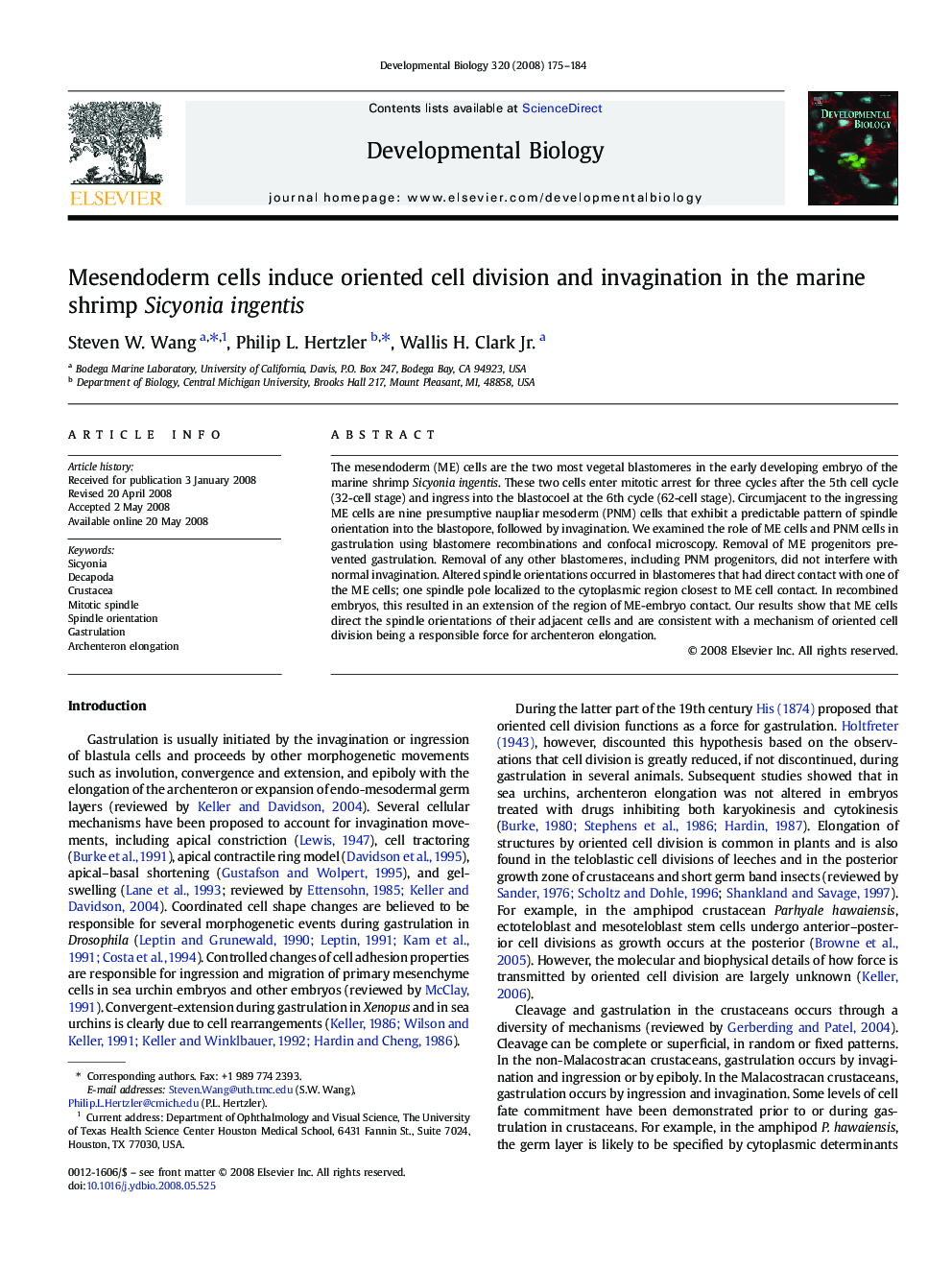| Article ID | Journal | Published Year | Pages | File Type |
|---|---|---|---|---|
| 2174553 | Developmental Biology | 2008 | 10 Pages |
The mesendoderm (ME) cells are the two most vegetal blastomeres in the early developing embryo of the marine shrimp Sicyonia ingentis. These two cells enter mitotic arrest for three cycles after the 5th cell cycle (32-cell stage) and ingress into the blastocoel at the 6th cycle (62-cell stage). Circumjacent to the ingressing ME cells are nine presumptive naupliar mesoderm (PNM) cells that exhibit a predictable pattern of spindle orientation into the blastopore, followed by invagination. We examined the role of ME cells and PNM cells in gastrulation using blastomere recombinations and confocal microscopy. Removal of ME progenitors prevented gastrulation. Removal of any other blastomeres, including PNM progenitors, did not interfere with normal invagination. Altered spindle orientations occurred in blastomeres that had direct contact with one of the ME cells; one spindle pole localized to the cytoplasmic region closest to ME cell contact. In recombined embryos, this resulted in an extension of the region of ME-embryo contact. Our results show that ME cells direct the spindle orientations of their adjacent cells and are consistent with a mechanism of oriented cell division being a responsible force for archenteron elongation.
